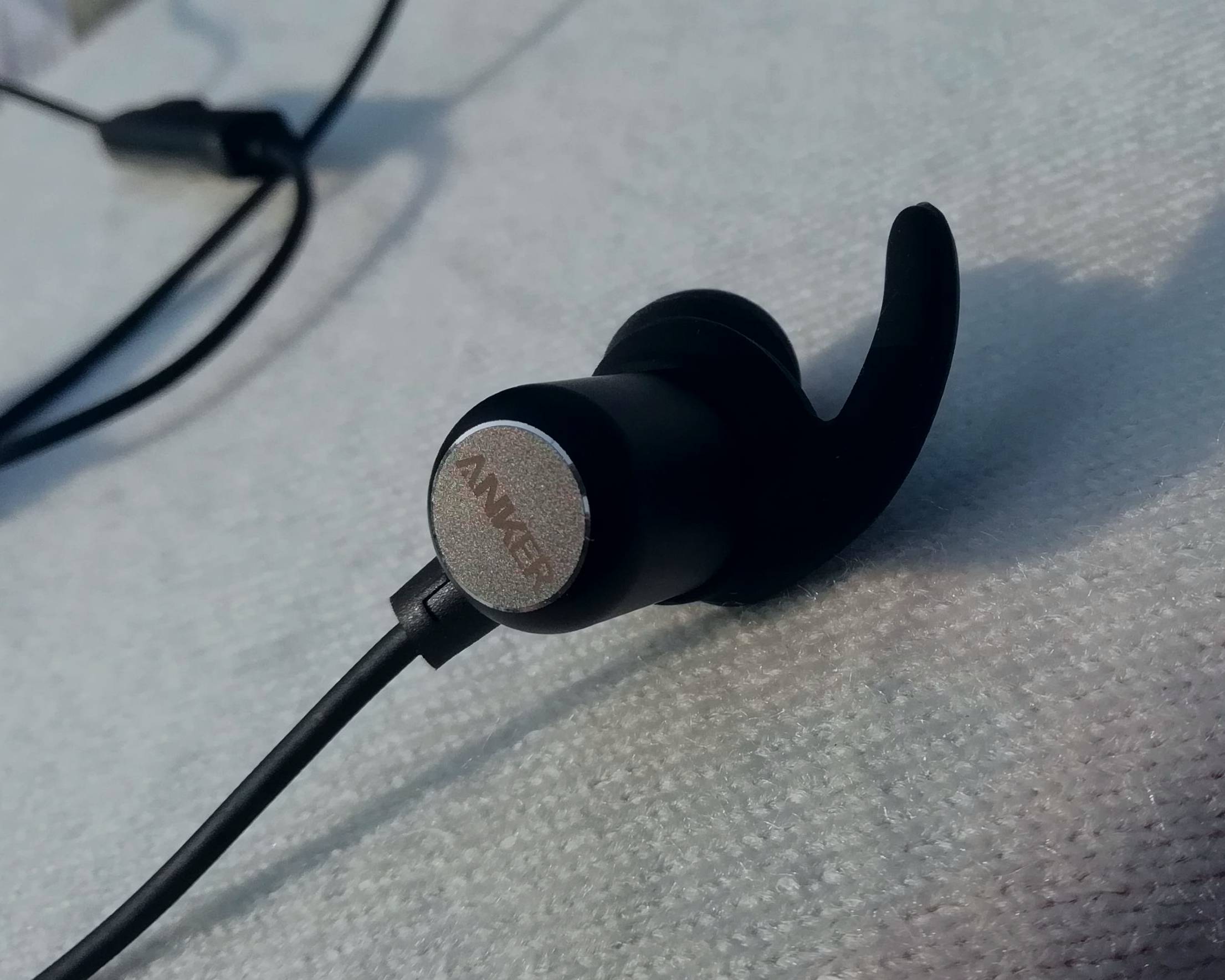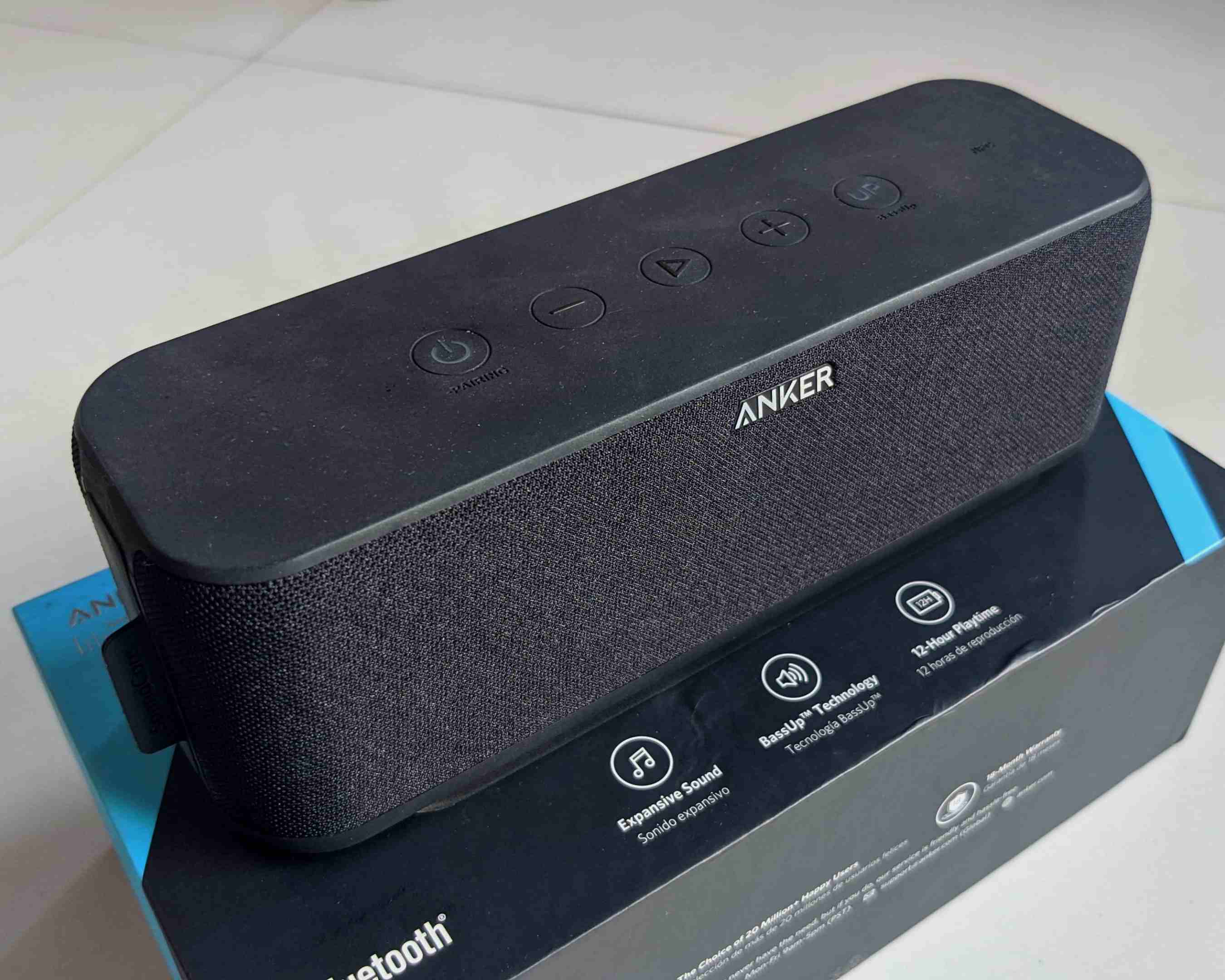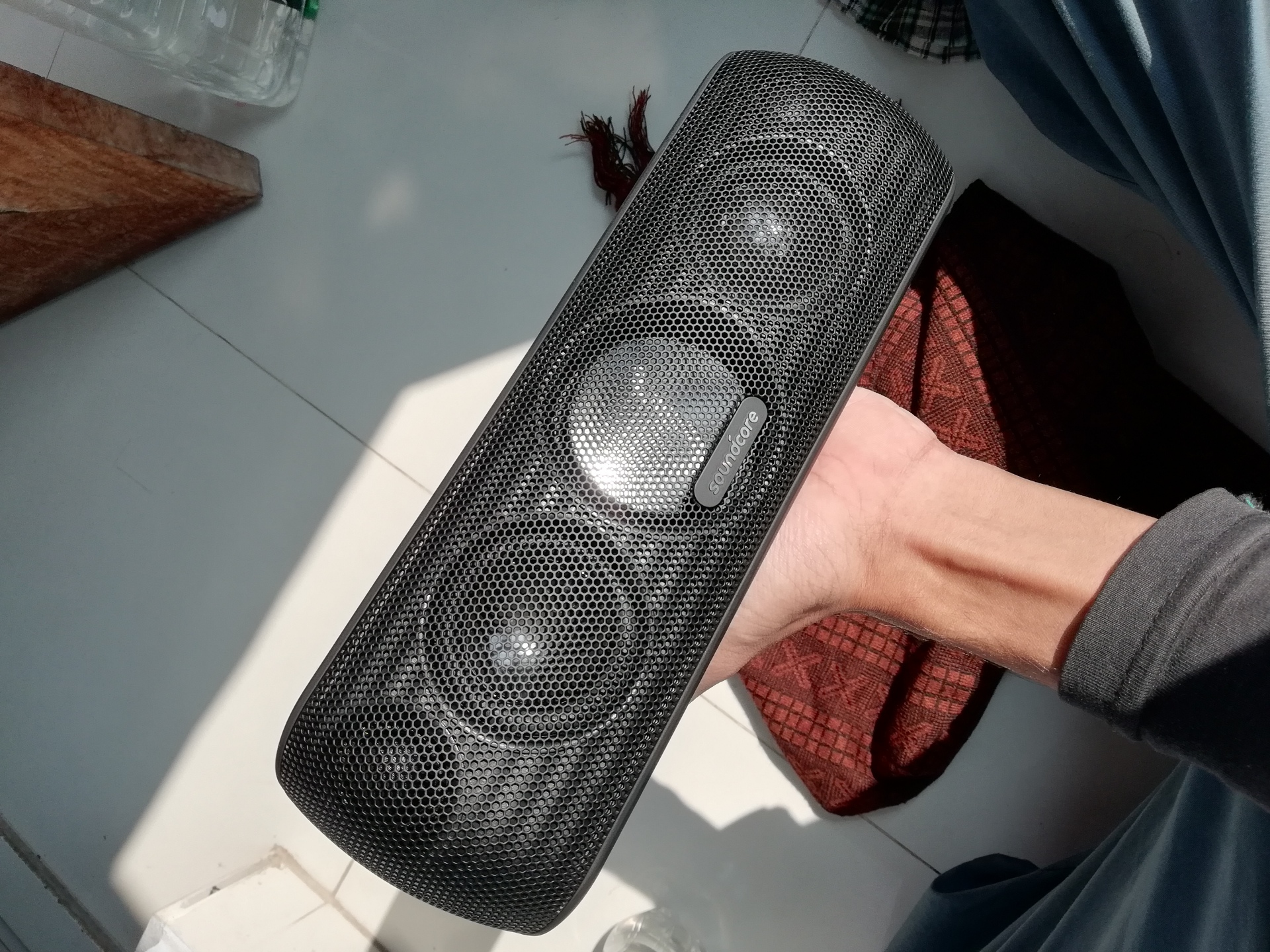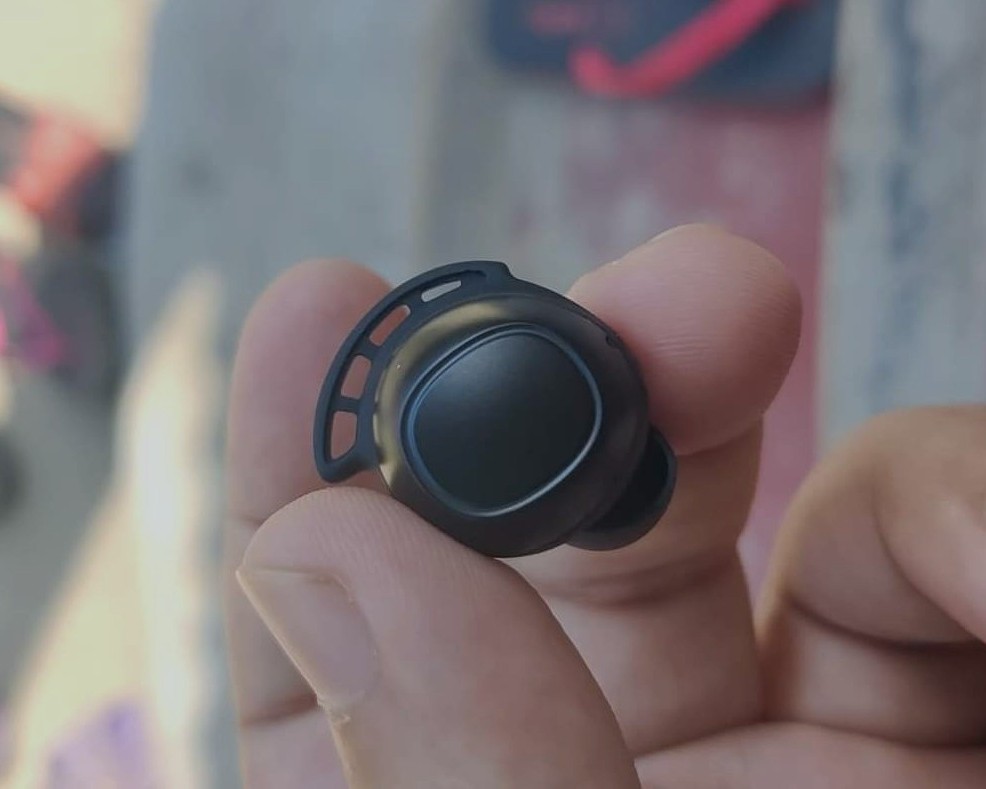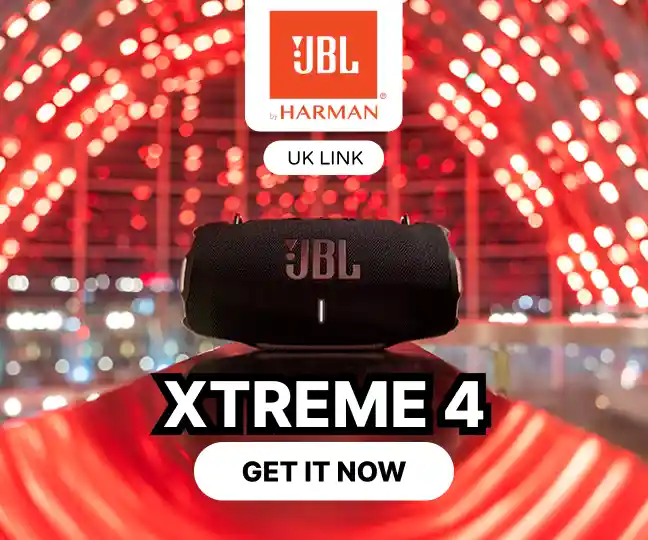JBL Xtreme 4 isn't worth upgrading from its predecessor Xtreme 3
Other than the big battery upgrade, sound isn't much improved Wednesday, March 20, 2024 - by Soumya Roy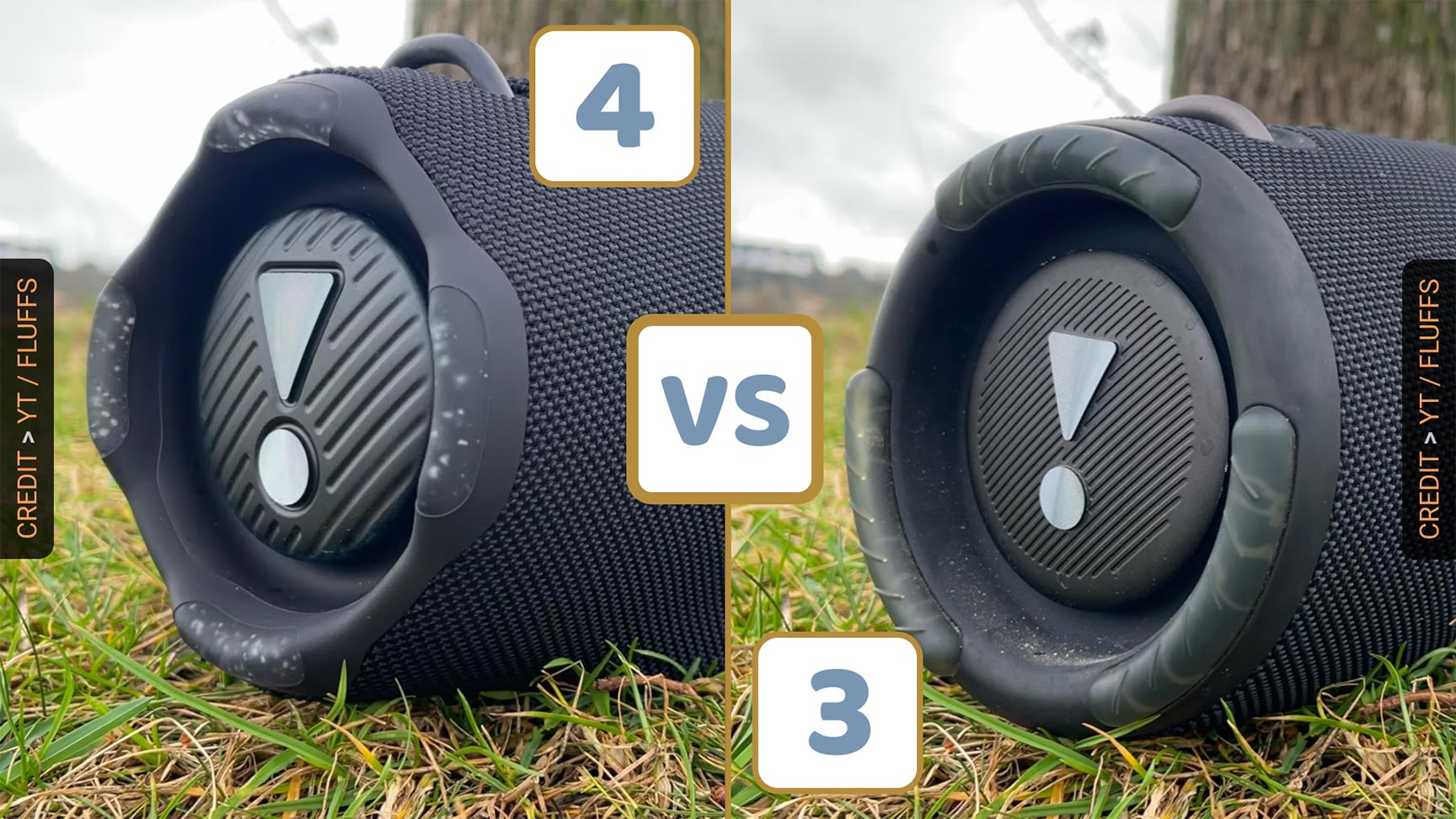
Xtreme 4 just launched after more than 3 years since the Xtreme 3 came out. The X4 isn’t available yet in most countries. However, some reviewers have reviewed the JBL Xtreme 4 with its predecessor, the JBL Xtreme 3. I don’t trust any of them, but some of them seem pretty honest and they make sense to me. Huge thanks to Oluv’s Gadgets and Alan Ross Reviews for their hard work. I am going to explain the sound signature, frequency response, features, hardware improvements and many more important stuff. Finally, I will tell you guys - is it worth upgrading to the Xtreme 4 or should you look somewhere else ..?
Overall Thoughts
The 68 Wh battery is the biggest upgrade vs smaller 36 Wh on the X3. Xtreme 3 sounds fuller with more upper bass at lower volumes, but the Xtreme 4 starts to sound fuller at higher volumes. Also at maximum volume, the X4 is around 1.5 dB louder on average loudness measurement. This is not a big difference but the X4 is a bit better and less screamy for moderate to higher level listening. I think you should not upgrade if you already have the X3 - the sound is only a bit better depending on volume.
Inside-the-box Comparison
Both the JBL Xtreme 4 and Xtreme 3 come with similar types of cardboard boxes. But there is a significant difference in their internal packaging. The packaging materials and how they are organized, seem way way different with the new Xtreme 4. The X4 has much better internal packaging in terms of protection and keeping things organized. So the new X4 has cardboard molds for the main speaker unit and inserts for the other accessories.
THESE G-ADS ARE SAFE AND INFORMATIVE - PLEASE
Disable Ad BlockeR
But the Xtreme 3 has only cardboard inserts for the speaker unit, and accessories are also not that organized. The X3 has plastic bags vs soft pouches on the X4 for the accessories. So, the Xtreme 4’s packaging is more solid and feels like it’s more high-quality packaging than the older Xtreme 3. The included accessories are pretty much the same for both. There you get the Type-C charger, carrying strap and user guide. If you are from the UK, there will be a UK AC 2-pin plug adapter. These are all JBL-branded accessories.
Check out the user manuals for Xtreme 4 and Xtreme 3 speakers.
Design & Build Analogy
There is a drastic change in the bottom design of the JBL Xtreme 4. The new removable battery design is very thoughtful and the large battery compartment is located at the bottom. Because of this removable battery design, the contact area for the bottom feet is changed in a good way. They’re more thicker and widespread, which adds sturdiness.
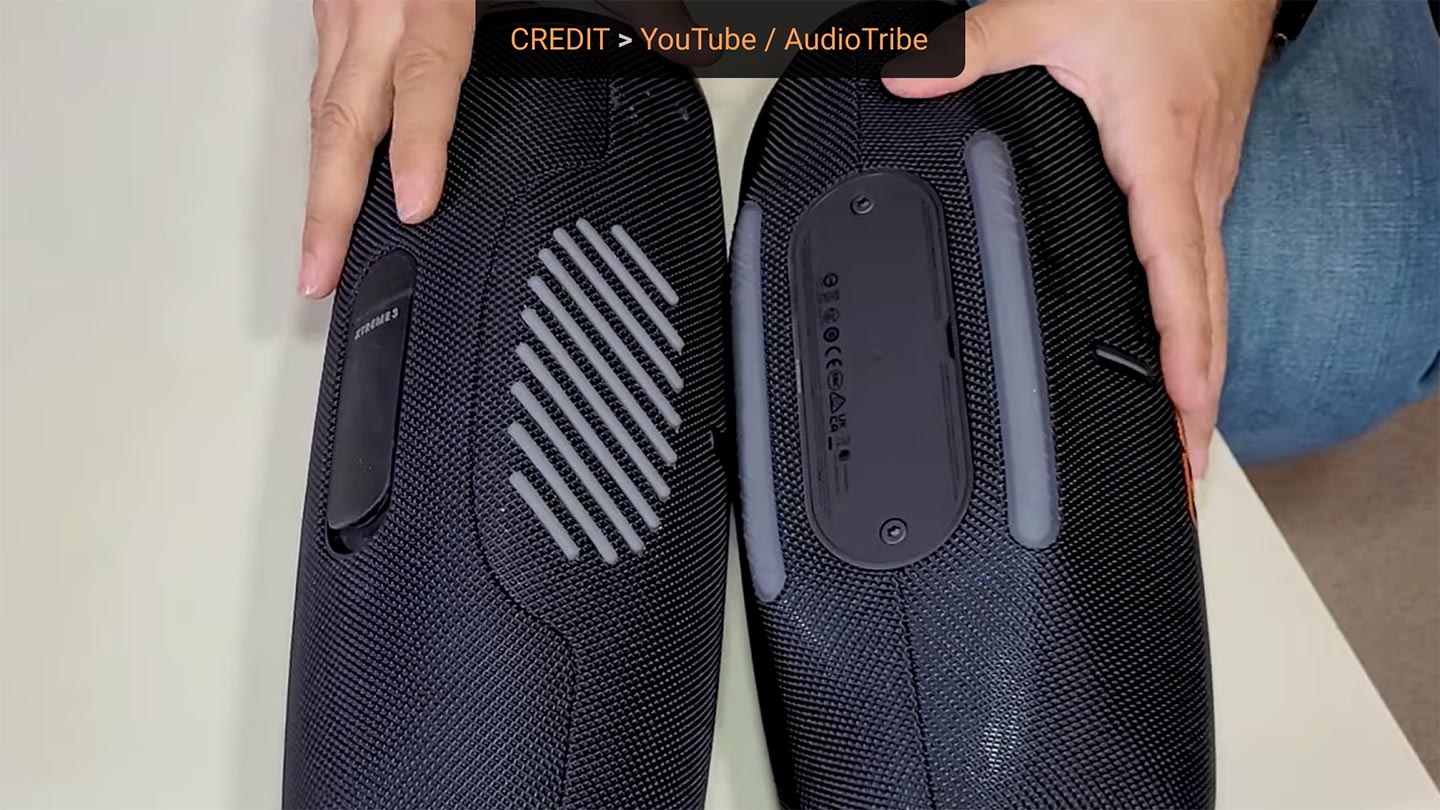
I really like the materials JBL uses in their speakers, high-quality expensive stuff. Also, I love the look of those JBL passive radiators, they are pretty unique looking. Both the Xtreme 3 and 4 have solid build quality, which seems and feels like they are built to last for years. They’re both IP67 certified, which means water and dustproof. JBL Xtreme 4 is heavier at 2100 grams vs 1968 grams for the Xtreme 3. The new big bold logo on them with the red accent looks cool. So both have good designs and solid build - premium look and feel.
With the new Xtreme 4, the 3.5 mm AUX port is gone. Also, the Type-C port is exposed now. But the Xtreme 3 has a protective flap for the ports. The included carrying strap has a little different design with the new one, but they’re both good-quality straps. The official charger is also built really well. I want to mention that the design of the passive radiators and their housing is a bit different but in a good way - the body is more oval-shaped.
Configuration Check
Their configuration in terms of woofers and tweeters, is pretty similar. Both are stereo speakers with 2 woofers and 2 tweeters. The woofers are in the middle and the tweeters are close to the top corners. The drivers are located on the front side of the speakers. The body of the X3 and X4 has oval-type curvature going on, which helps to spread the sound from those corner tweeters. The 2 passive radiators are on the sides for each.
These ads are safe, informative and interesting. Turn off ad-blocker for this website. Ad revenue helps to keep the site alive.
Please Disable Ad BlockeR
So each unit has 2 front woofers, 2 front tweeters and 2 side passive radiators. For the JBL Xtreme 4, the woofers are 2 x 70 mm in diameter and the tweeters are 2 x 20 mm. On the JBL Xtreme 3, the woofers are 2 x 65 mm and the tweeters are 2 x 20 mm. Not sure about the exact RMS power rating of the drivers and the differences between them but the woofers are around 20 watts and the tweeters are around 15 watts each on battery power. You can connect multiple units for wide-stereo or multi-mono - more on features section.
Hardware Changes
I felt like writing a dedicated section for the hardware changes or improvements because there are some genuine improvements and reductions. The biggest change / improvement is with the battery unit in the JBL Xtreme 4. The new Li-ion pack is a pretty big pack with a huge capacity increase. The X3 has a 36.3 Wh pack vs 68 Wh pack on the X4 is pretty much doubling the total battery capacity without significantly increasing the load.
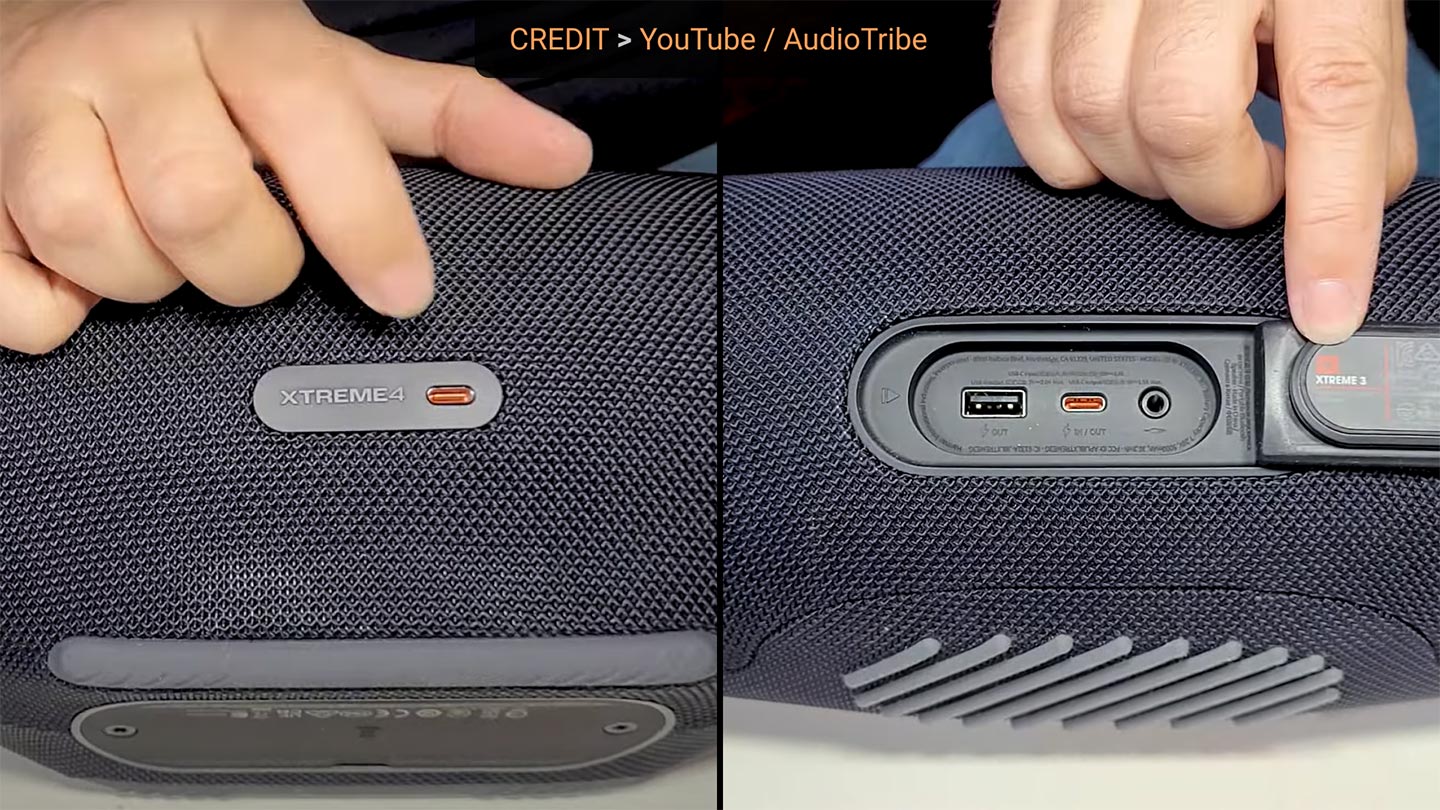
On top of that the battery pack is built really well to be a standalone replaceable battery unit with quality connection terminals. The overall build mechanism for the removable system looks pretty durable and solid. This type of implementation means - you’ll probably be able to use third-party replaceable battery units, buy multiple removable battery packs for the X4 which will increase the total playback time, and maybe hack the unit up for other different types of use case scenarios. Not sure if JBL will have official battery pack, maybe later.
The woofers are 70 mm in diameter for each, which was probably 65 mm for the Xtreme 3s - both are pretty close to 70 mm. The RMS power is unchanged at 100 watts for both when plugged in. The AUX-in port is removed along with the USB Type-A port for the power bank capability. But with the new exposed Type-C port, you have both charge in and out. It is USB PD technology, which maxes out at 20 volts 3 amps for both speakers.
Sound Quality Comparison
This is going to be a detailed sound quality assessment because the sound quality is the most important aspect to me along with other factors when deciding to purchase any speaker. The low volume check is the 50% test on the volume scale, the average volume check is the 75% test and the max volume check is the test at 100% volume level. First, I am including the frequency response analysis for the accuracy test of those 5-band eq in the JBL app for the Xtreme 4 only, X3 has a 3-band eq. Huge shout out to Alan Ross Reviews for testing these speakers thoroughly - he’s helping people to make the right decision.
Custom EQ Accuracy
The Xtreme 4 has the upgraded 5-band eq vs the old 3-band eq on the Xtreme 3. The 5-band eq works okay and is good enough to make decent changes to the overall sound signature. The 64 Hz EQ band is centered around 55 Hz in the frequency/accuracy test and affects everything below 200 Hz. The 250 Hz band is centered around 400 Hz and affects everything from 100 Hz to 1 KHz, which is not accurate. It should be centered around the 250 Hz mark, but JBL deliberately did this so that you can get the sense of deep bass in certain scenarios. Then the 1 KHz slider affects everything from 400 Hz to 5 KHz and is centered around 1.3 KHz. The 4 KHz slider has effects from 1.5 KHz to 10 KHz, which is spot-on centering around 4 KHz.
THESE G-ADS ARE SAFE AND INFORMATIVE - PLEASE
Disable Ad BlockeR
The last 16 KHz band is boosting the frequencies from 4 KHz and up. Now the question is how much we are gaining here ..? The app does not tell you this. From the test, we can say that it’s about 6 dB gain at 60% volume from those eq bands on their affected center frequencies. So to clarify the baseline, custom eq at default or sliders in the middle is the signature mode. Then the sliders to max or min will have around +6 or -6 dB gain or loss from the JBL signature sound. However, the effects of the sliders will become much less noticeable as you increase the volume because the limiters will try to limit the outputs for safety.
Low Volume Check - 50%
So, yeah like I just explained if you want you can totally change the sound signature by using the custom EQ bands for lower volumes, 6 dB gain is kind of a lot in terms of change, some EQs don’t even add any gain instead they reduce everything relatively to make you feel like the perceived sound is changed. Now let’s check how the default sound compares on both the X3 and X4 at 50% volume. Pay attention to the track analysis explanation.
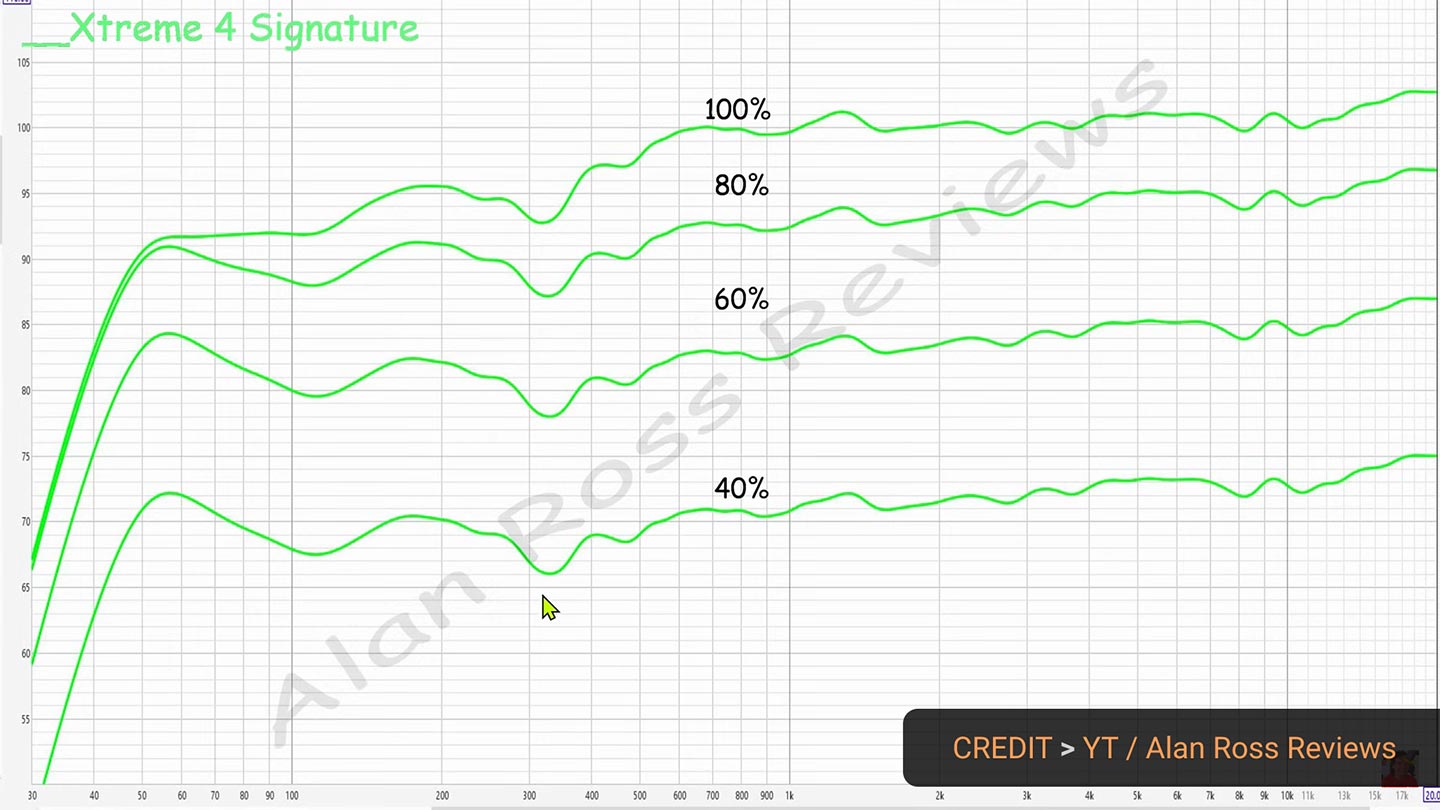
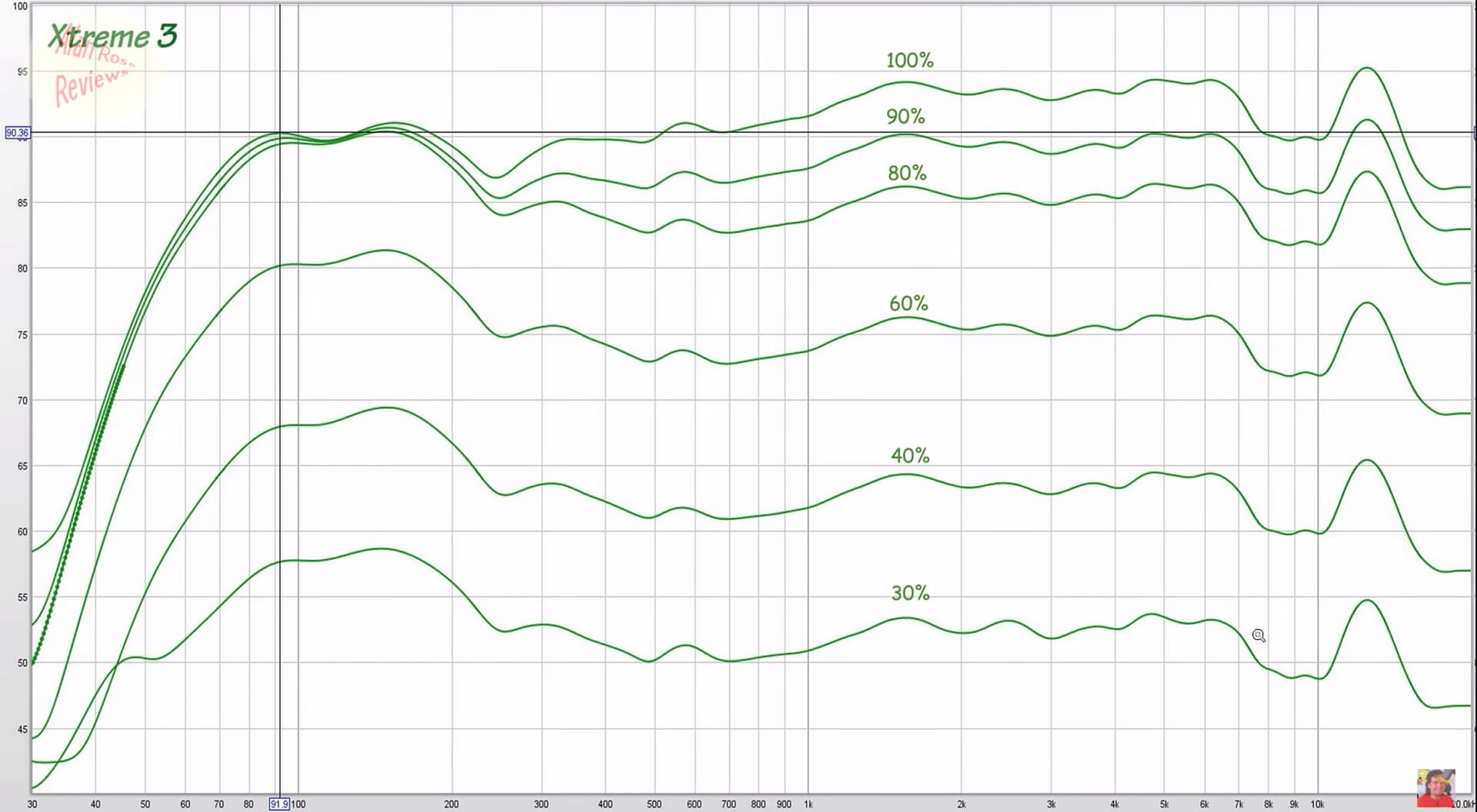
From their frequency response, the Xtreme 4 has a small peak at 9.5 KHz compared to frequencies just before and after that, but overall it’s a rise towards the 20 KHz mark. However, the Xtreme 3 has a wide dip from 7 KHz to 11 KHz, then another peak and roll-off. From the track analysis, the result is inconsistent as their peaks are at different places. This is also because different tracks have peaks and dips at different places.
So the track “Chen Bois - One Night” has a lot of stuff going on at around 9.5 KHz. You can see that in the image and I am explaining this in a very easy-to-understand way. The X4 has a flat enough response around and below that 10 KHz mark. So we can take it as somewhat reference / original to explain the track dependencies. So, the X3 has a dip at 9.5 but the track has a huge peak, this is why the X3’s track response gets a little boosted at that frequency. Then at 6 KHz, there is less stuff going on with the reference track. But we don’t have a dip there on the X3’s original frequency response. Now because of this, the track’s frequency response is also getting a little boosted this time around.
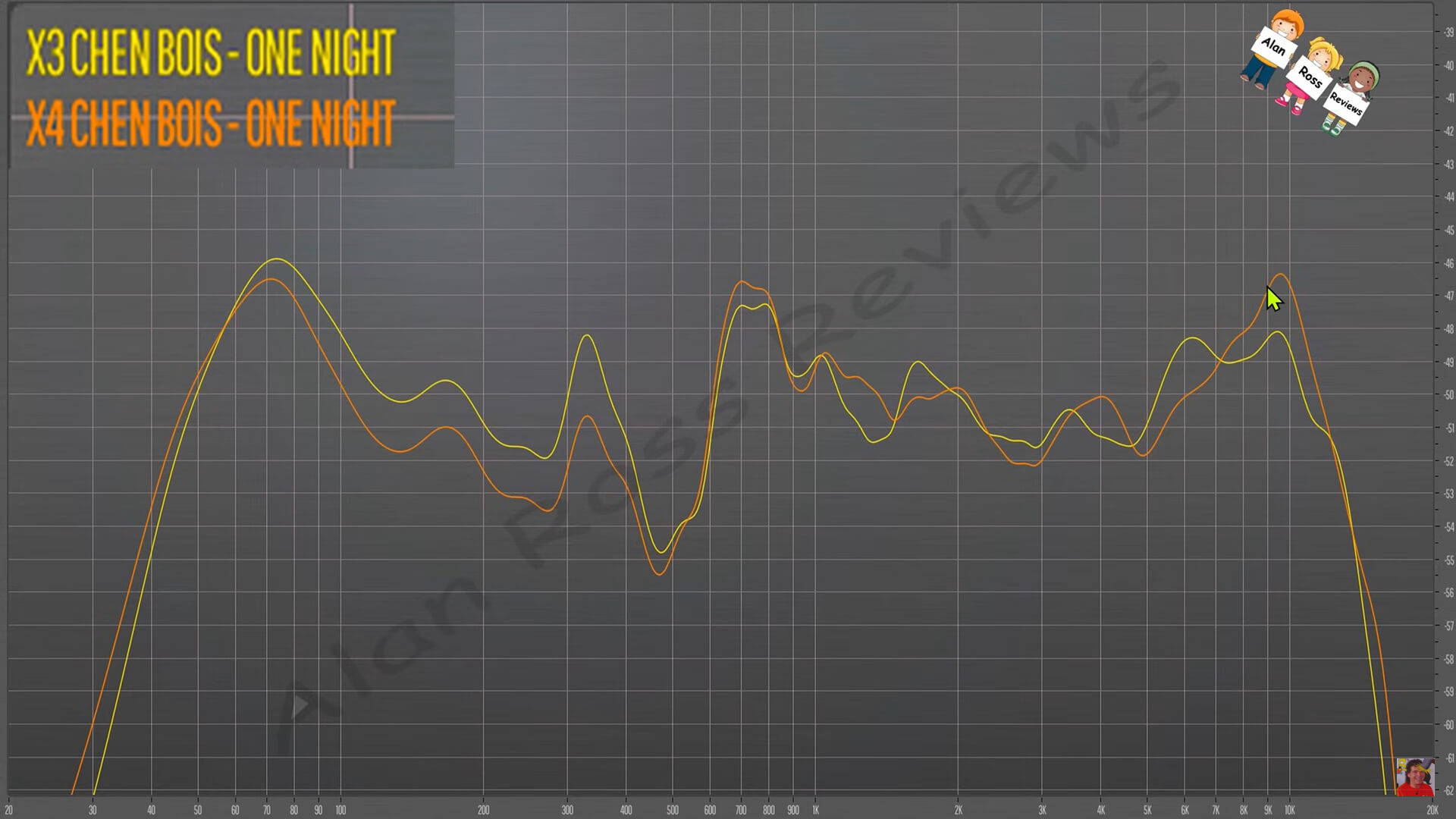
So the 9.5 KHz boost is mainly because of the track’s peak and the 6 KHz peak is mainly because of the X3’s frequency response. We can see that those peaks are pretty much at the same level on the X3’s track response. When there is a peak/dip in the track, there is a dip/peak in the frequency response - this explains those two similar-level peaks. Also, the X4 doesn’t have the wide dip like the X3 but has an upward upward-slanting response. That’s why when a track has stronger highs, the X4 will produce an overall stronger treble response. However, the X3 will sound pretty nasty because of that standalone 12 KHz peak.
THESE G-ADS ARE SAFE AND INFORMATIVE - PLEASE
Disable Ad BlockeR
The sound will change depending on the tracks. Some tracks will sound brighter on the X3, but most tracks will sound brighter with more clarity on the X4. You will perceive the sound as more clear because of the high-end rise but it’s not the same as getting more details out of it. It’s more like unnaturally hearing a more clear sound. They both sound pretty clean and at lower volumes, the X3 has an upper-bass advantage, while the X4 lacks at that. For the sake of some high-end, you are losing a lot of the low-end on the X4. So, I think the X3 sounds fuller, more balanced and a bit better overall at lower volumes.
Average Volume Check - 75%
The listening experience starts to change as you turn up the volume. At 75% (a bit above average) the Xtreme 4 has more upper bass and mids compared to the Xtreme 3. Also, depending on the track the high-end peak will shift to different frequencies. Most tracks don’t have much going on after 12 KHz, so the 12 KHz peak of the X3’s frequency response is much less noticeable in track analysis. But the 6 KHz area on the X3 is pretty strong, stronger than X4. But after 7 KHz, if the tracks have audible frequencies, the X4 will sound more brighter. This is because the Xtreme 4 is stronger overall in the high-end.
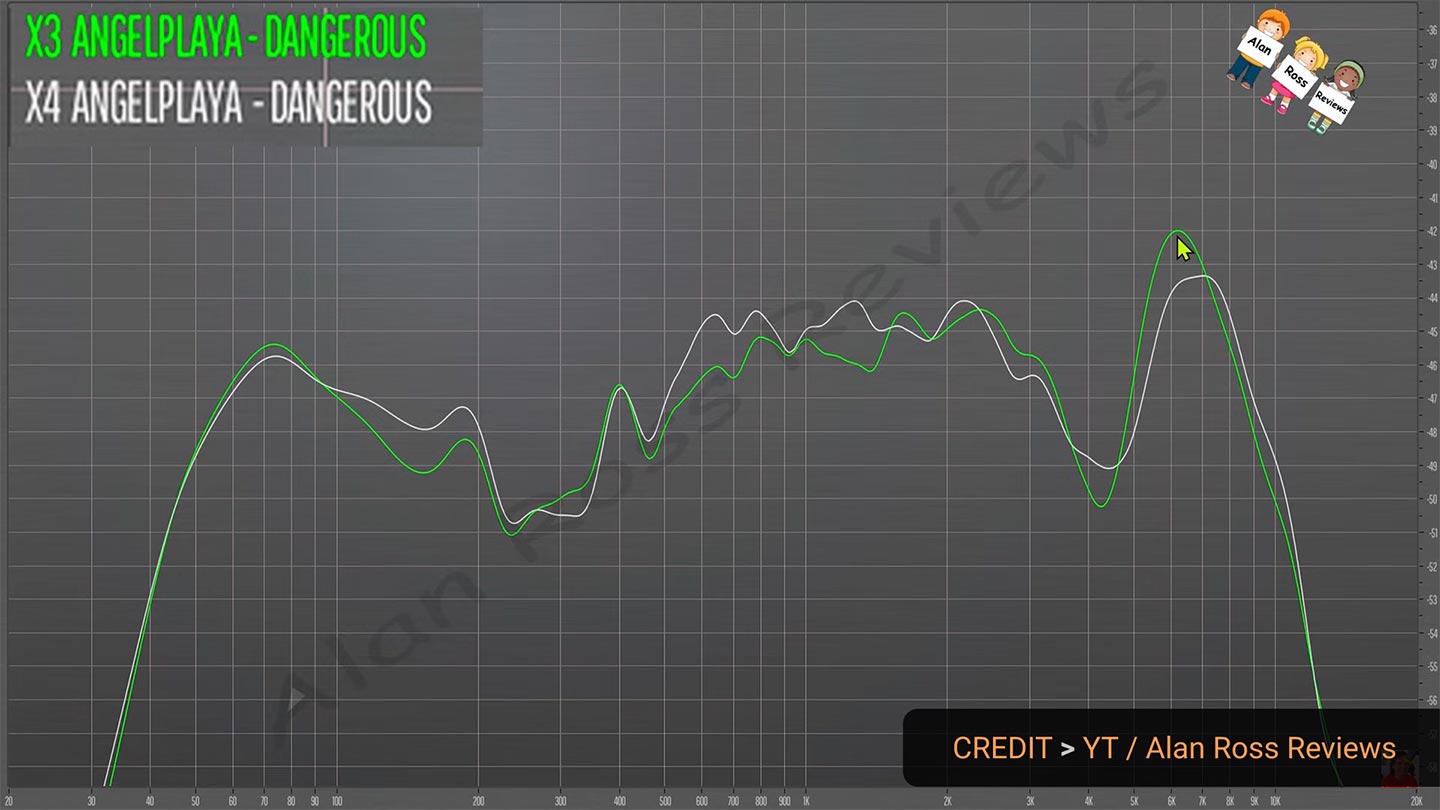
So, the important point here is, for most tracks the high-end peak is happening earlier in the frequency range on the X3, but later on the X4. For some other tracks, the response will be way different on both. The 6 KHz peak at the presence region on the X3 is making the sound a little harsh, scratchy and tinny. But the 9-10 KHz peak on the X4 does not have that bad of an effect to the sound signature. So at these sort of moderate to higher listening volumes, the X4 becomes more mature sounding with more mids, upper-bass and better highs. This is not a huge difference and also not much change in deep bass.
Max Volume Check - 100%
The bass doesn’t increase after 80% volume but mids and highs do increase. So the sound becomes more mids and treble-heavy on both, which is not a pleasant listen. They become even harsher, irritating, screamy and scratchy. And with more brighter tracks it’s even more thinner and ear-piercing. So you only turn it up past 80% for partying or so. However, between the two the Xtreme 4 is a clear winner for maximum volume.
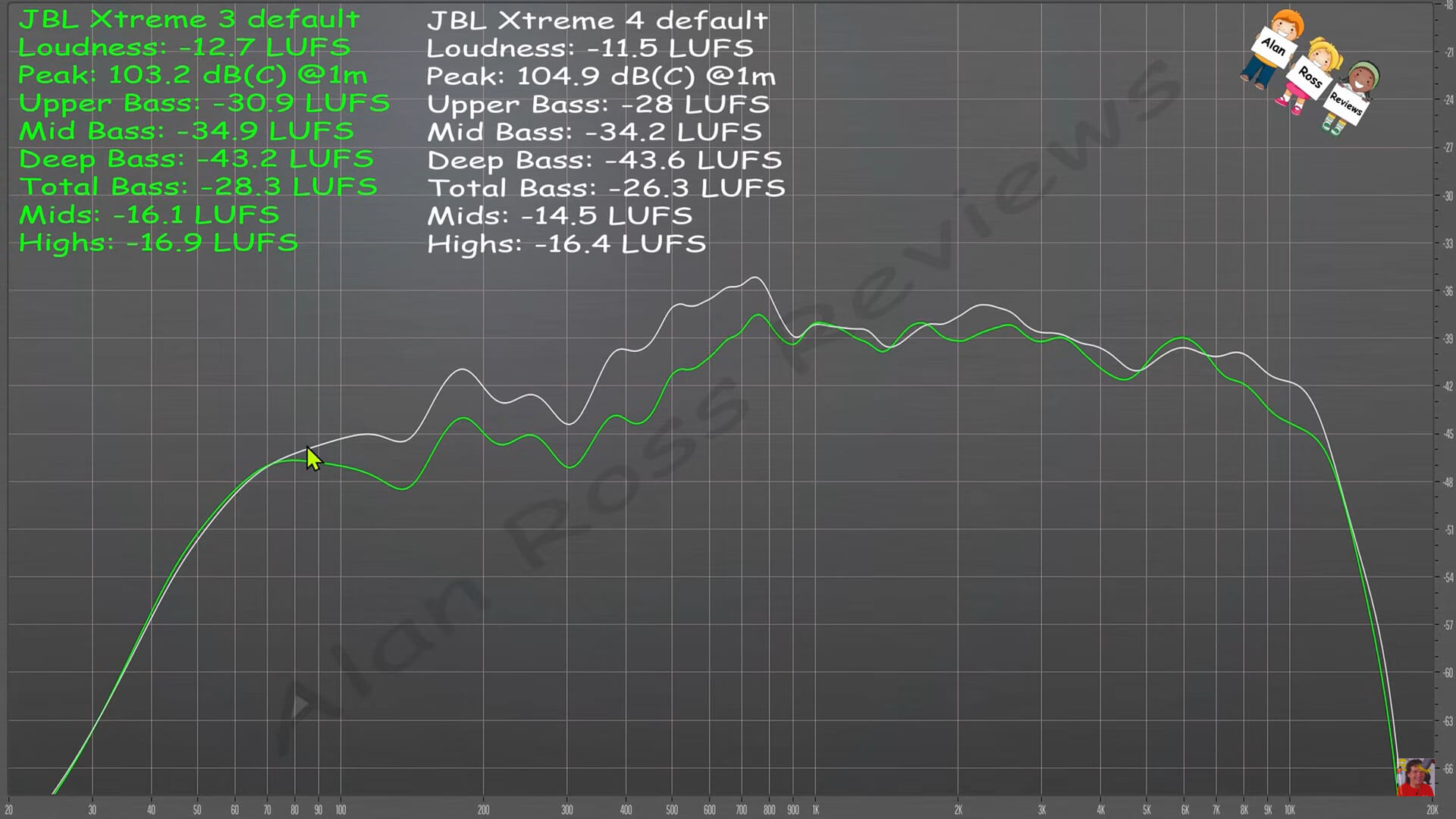
The Xtreme 4 is around 1 dB to 1.5 dB louder on average across the whole spectrum. It is a LUFS measurement, where the X3 is at -12.7 LUFS and the X4 is at -11.5 LUFS. Also, there isn’t a huge difference in peak measurements, 103.2 dB on the X3 vs 104.9 dB on the x4. So overall, the Xtreme 4 is almost 1.5 dB louder than the Xtreme 3, and this loudness is coming mainly from the upper-bass and midrange. The X4 is significantly stronger from 80 Hz to 1 KHz and slightly stronger in the upper midrange and high-end regions.
So the Xtreme 4 will sound a bit better at max volume because of more upper-bass and mids, which will balance out the screamy high-end by a little bit. The X4 is also louder and if you care about loudness even if it’s a little bit louder you’ll be choosing the X4. Check out the conclusion section to know my verdict about which one is better overall.
Custom EQ and Presets
You can significantly change the sound signature by using a custom EQ. The custom EQ got upgraded from 3 bands to 5 bands on the new Xtreme 4. Probably the 5-band EQ will not come to the X3 via any software update, because there will be one less reason to buy the new speaker. The default custom with sliders in the middle is the JBL signature sound. The default signature sound is nowhere near a flat or balanced sound.
THESE G-ADS ARE SAFE AND INFORMATIVE - PLEASE
Disable Ad BlockeR
However, you can change the sound to a somewhat balanced sound signature using the 5-band EQ. Whether it’s getting more balanced or not, the important thing is that the EQ bands have a significant effect on the sound. So you can control the bass, mids and highs in a good way to your personal taste. But still the app doesn’t have the ability to set more than one custom EQ. Remember, initially Soundcore also didn’t have it, but now they do.

The vocal mode on X4 has more mids but less bass and highs. Energetic mode has reduced deep bass, boosted upper bass and a slight rise from 700 Hz and up. The chill mode has reduced bass, less upper mids and a big roll-off at the high end.
Features & Battery Comparison
The new Xtreme 4 has some new features that are worth discussing. The AI Sound Boost is a pretty interesting one. This feature measures the power consumption and frequencies in real-time. I am not sure yet if this feature is changing the original sound significantly or not, but they are saying that this will reduce distortion and push the speaker to the limits for more powerful dynamic sound. The new speaker has Auracast support, which is a new tech. It’s about wireless audio/video streaming via Wi-Fi and Bluetooth. But JBL is using it to connect unlimited Auracast-supported speakers via Bluetooth for audio.
Both speakers are also compatible with JBL PartyBoost to connect multiple speakers. They can be connected in a stereo configuration or a mono configuration with multiple speakers. Both the X3 and X4 have IP67 support. So they are dustproof and waterproof. There is this new feature PlaytimeBoost, which will reduce the bass to make the battery last longer. They say it will give you up to 6 hours of additional backup. The default codec is SBC for both, even being that expensive they don’t have high-end codecs. Bluetooth 5.1 for the Xtreme 3 and 5.3 for the Xtreme 4. The power bank feature is at max 11 volts 2 amps.
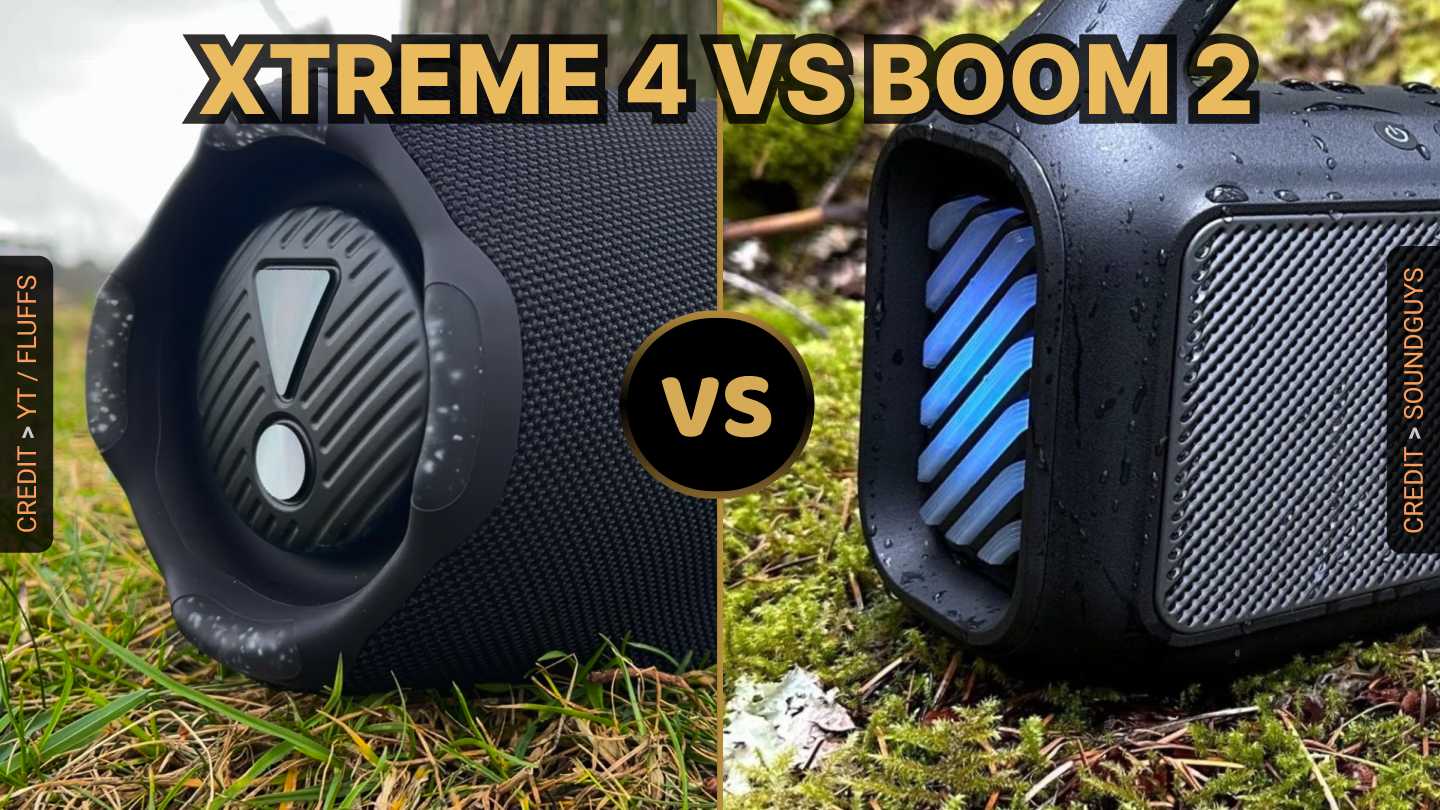
The battery capacity is almost double with the new Xtreme 4. This is to me the biggest upgrade that can make people buy the X4. The X4 has a 7.2-volt Li-ion battery pack with 9444 mAh 68 Wh capacity. And the X3 has a 7.2-volt pack with 36.3 Wh 5000 mAh capacity. Xtreme 4 can last 24 hours on average 50-60% listening volume and Xtreme 3 can last 15 hours. Charge time 3.5 hours for X4 vs 2.5 hours for X3. Power bank out 5V / 3A from the type-c port of the X4 and 5V / 2A maximum from the type-a port of the X3 speaker.
Conclusion - Pick Wisely
I don’t recommend you buy the Xtreme 4 if you already have the Xtreme 3. Only the extended battery life will feel like a real upgrade. There is not a huge difference in terms of sound quality. You are not getting any proper bass extension or even the deep bass is pretty much the same. I can hope that if the Xtreme 4 would be able to keep the bass balanced without limiting it after 80%, then it would make a difference. But they both limit the bass after 80% volume. The Xtreme 4 is only 1 to 1.5 dB louder at max and 0.5 to 1 dB louder at 75%. This makes the X4 slightly better than the X3 but not worth upgrading from X3.
These ads are safe, informative and interesting. Turn off ad-blocker for this website. Ad revenue helps to keep the site alive.
Please Disable Ad BlockeR
But if you are choosing between X3 and X4, I think the Xtreme 4 is worth spending a little extra money on. I recommend the X4 to those who don’t have the X3 but can afford the X4 and want a quality speaker from a big brand that offers quality bass with clean sound. There are much cheaper options like the Soundcore Motion Boom and Boom 2, but these are for people who have a tight budget. These budget speakers can compete with Xtreme 4 and 3, but they can’t offer clean tight precise bass like the JBLs. Check out the official webpage of the JBL Xtreme 4 and Xtreme 3 to know more about their marketing gimmick.
IF you are interested in even smaller speakers - check out my Soundcore Motion 300 vs Bose Soundlink Flex article. Both did well in a head-to-head comparison.
motion+ review article motion+ review youtube
nillkin super frosted matte case review
motion+ bass response

